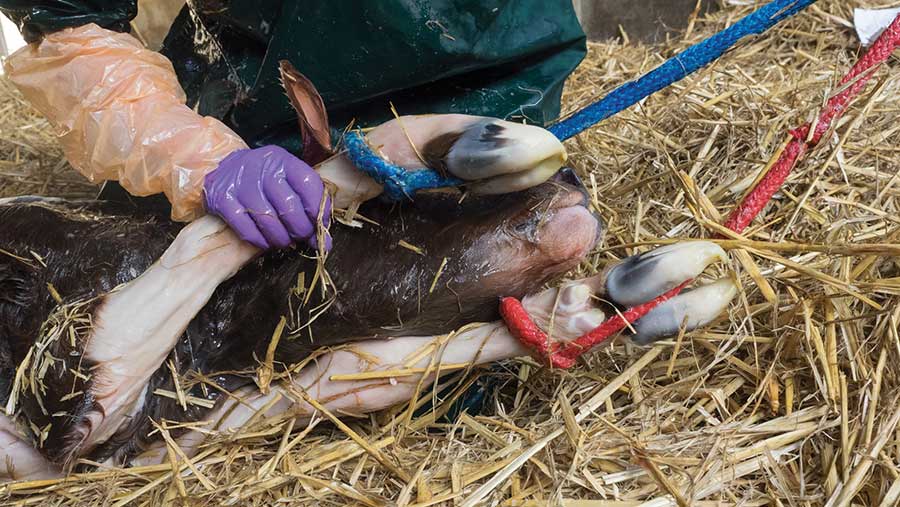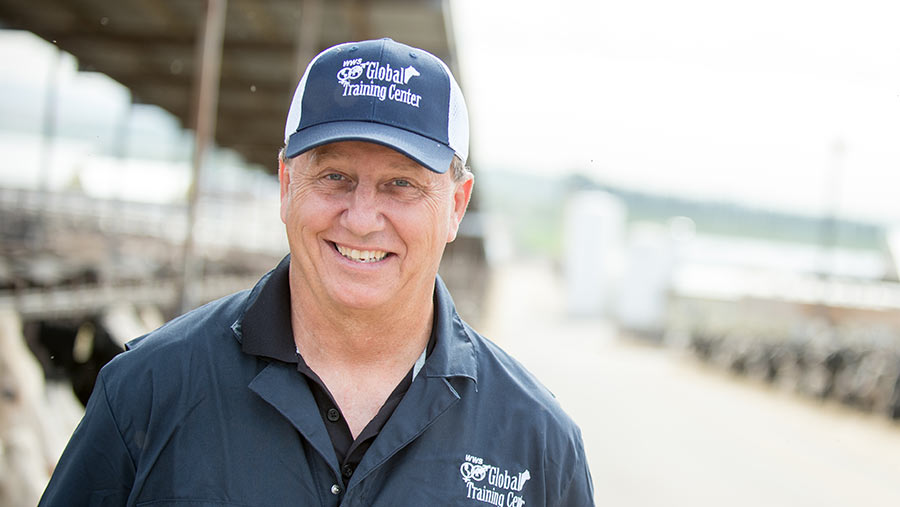How to manage and minimise difficult calvings in cows
 © Kathy Horniblow
© Kathy Horniblow The two main calving problems associated with cows are lack of uterine contractions and incorrect position of the calf.
Through improved management and appropriate intervention, the negative impacts can be reduced. Dr Scott Abbott at Dairy Vet Management, who is also director of technical services at breeding company World Wide Sires, gives advice on how to prevent these common issues.
Uterine inertia means the uterus is not contracting and the cow is not pushing the way she should. There are three primary reasons for this.
Below we will look at what causes them and how to prevent them, and also discuss malpositioning.
1. Comfort
Increased standing time delays calving and can increase the stillborn risk, so providing large, comfortable areas where cows can lie down and feel safe is important.
Most operations choose to house mature cows in cubicles. Cows in the advanced stages of gestation are obviously wider, and cubicles should be 135-140cm wide.
Pregnant cows prefer to lie down to rest their heavily burdened feet, so soft, comfortable bedding is essential to promote additional time lying down. If the cows do not fit well into the stall, or the stall is uncomfortable, they will not lie down.
Target 12-14 hours a day of dry cows lying down. The most important thing is not to interrupt lying at the beginning of calving.
Cows give birth best when they feel safe and protected from all stimulus. Calving is delayed when cows are constantly disturbed by people walking around them, if they are separated from others (this is more of an issue with heifers), or they are placed in high traffic areas (tractors, trucks and people). Work with staff to make sure they understand that these expectant mothers need calm and quiet.
2. Energy
Delivering a calf takes a tremendous amount of energy. Providing plenty of access to feed and water helps build that energy. Feed bunk and water space are essential, along with the ability to move around to reach that food.
Target 75cm feed space a cow and 10cm water space for close-up and fresh cows.

Dr Scott Abbott
Control of environmental factors such as temperature and adequate ventilation will prevent loss of appetite, which helps maintain sufficient energy levels so the cow will have the ability to push when the time is right.
3. Calcium
Calcium and related mineral issues have a direct impact on the cow’s ability to push because calcium is needed for muscle contraction. Low calcium levels may slow the ability of the mother to push, with a direct impact on stillbirths. Controlling the cow’s diet is critical for controlling calcium levels.
To help control calcium:
- Monitor total calcium (and potassium) intakes
- Feed calcium binders and acidifiers which makes calcium more available.
These can all work but require monitoring. Calcium levels also relate back to having adequate access to feed. A well-planned diet is useless without proper intakes.
Malpositioning, when to examine animals, and delivering a calf safely
Malpositioning, when the calf is not in the correct position for delivery, is more common with cows than heifers, in part because twins are much more common in cows (10% versus 1% in heifers).
Once a cow starts to push, there should be progress within 30 minutes. If there is no progress, or two hours have gone by with minimal progress, the cow must be examined.
To examine the cow, you need to:
- Move her to a safe, clean location.
- Protect the cow from infection by washing her and your hands using soap and water and wearing gloves.
- After identifying the problem, either correct the position of the calf or call for assistance.
About 80% of the cows examined will need help delivering. In part this is because the process of examination itself stops the cow from pushing.
When assisting in delivery, take your time to allow the cow to dilate. Resist the pressure to rush the delivery and “save” the calf. In up to 40% of assisted deliveries there are injuries to the calf. A slow and steady delivery is the way to minimise injury to the cow and calf.
Remember: clean, lube and dilate. Let the cow do most of the work. Take up the slack when the cow pushes. Too often we “extract” the calf when what we need to do is “assist” the mother.
